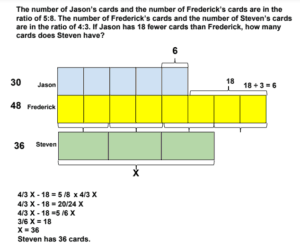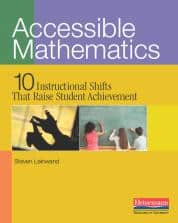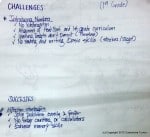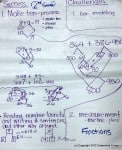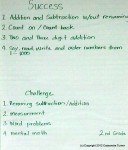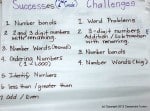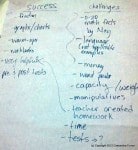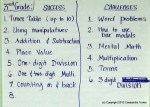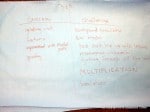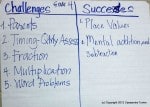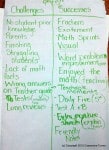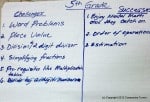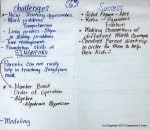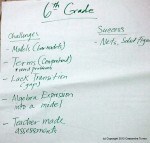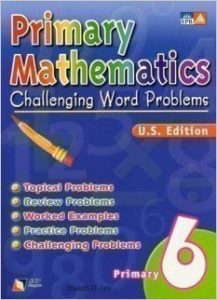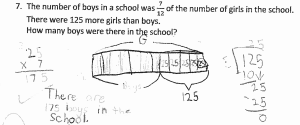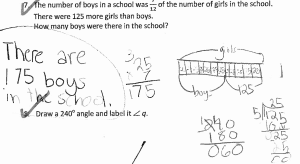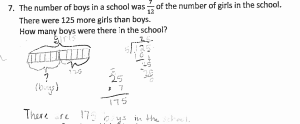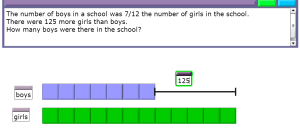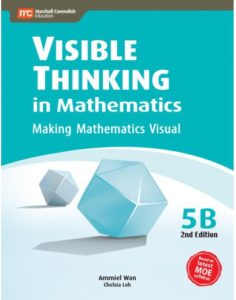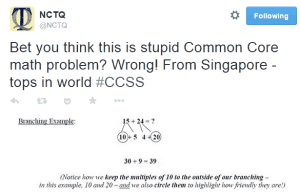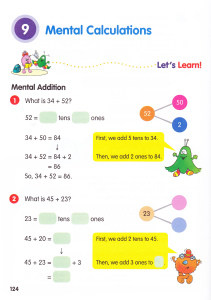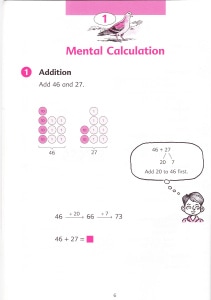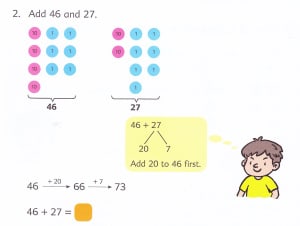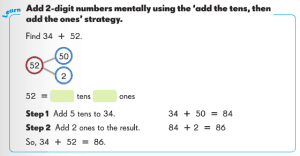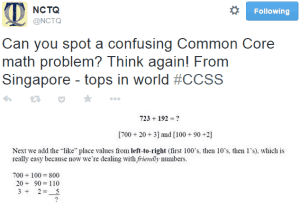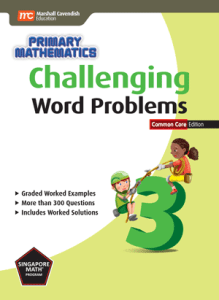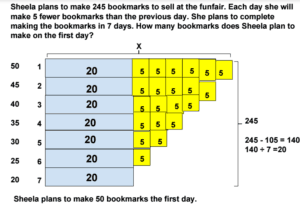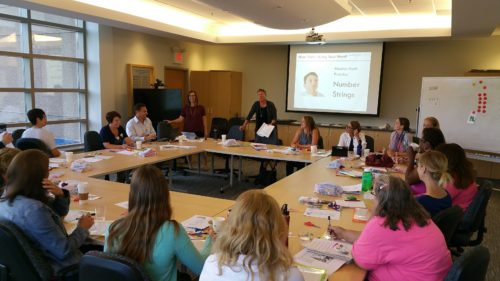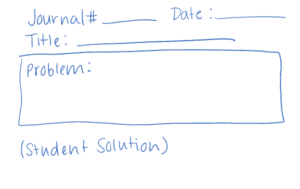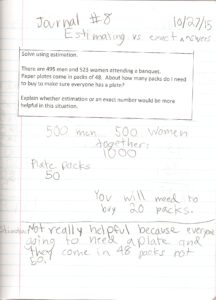Word Problem Wednesday was such a hit, we’re going to continue through the year with one problem a month.
This week’s problem comes from Primary Mathematics Intensive Practice 6A published in 2004 by SingaporeMath.com Inc: 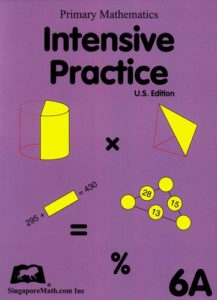
There were 75% more adult passengers than children on a bus. After 1/2 of the children had gotten off at a bus stop, there were _______% more adults than children left on the bus.
Submit your solutions and we’ll post all interesting strategies.
The problem posted August 30th came from Primary Mathematics Challenging Word Problems 6 by Joseph D. Lee, published in 2006 by Panpac Education Private Limited.
The number of Jason’s cards and the number of Frederick’s cards are in the ratio of 5:8. The number of Frederick’s cards and the number of Steven’s cards are in the ratio of 4:3. If Jason has 18 fewer cards than Frederick, how many cards does Steven have?
Intrepid reader Shirly Davis sent in her solution:
Whew! How did you do?
